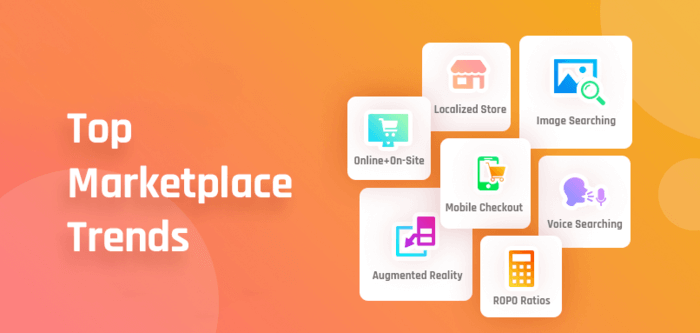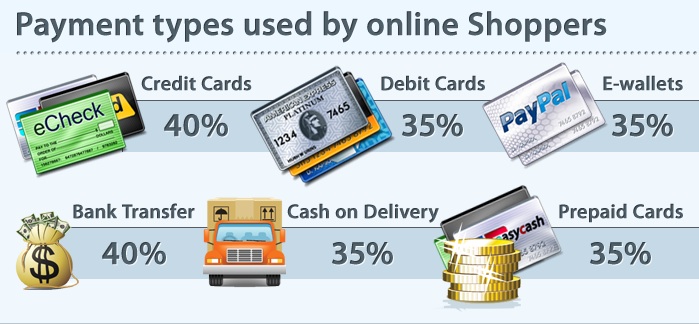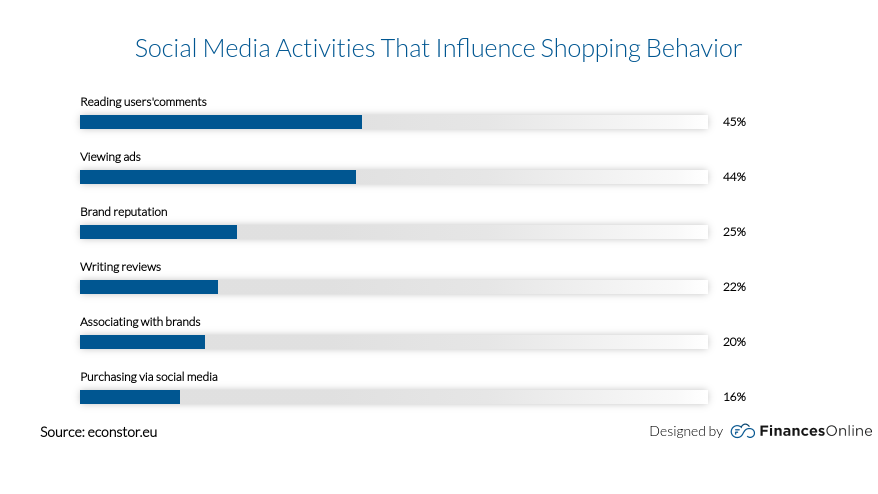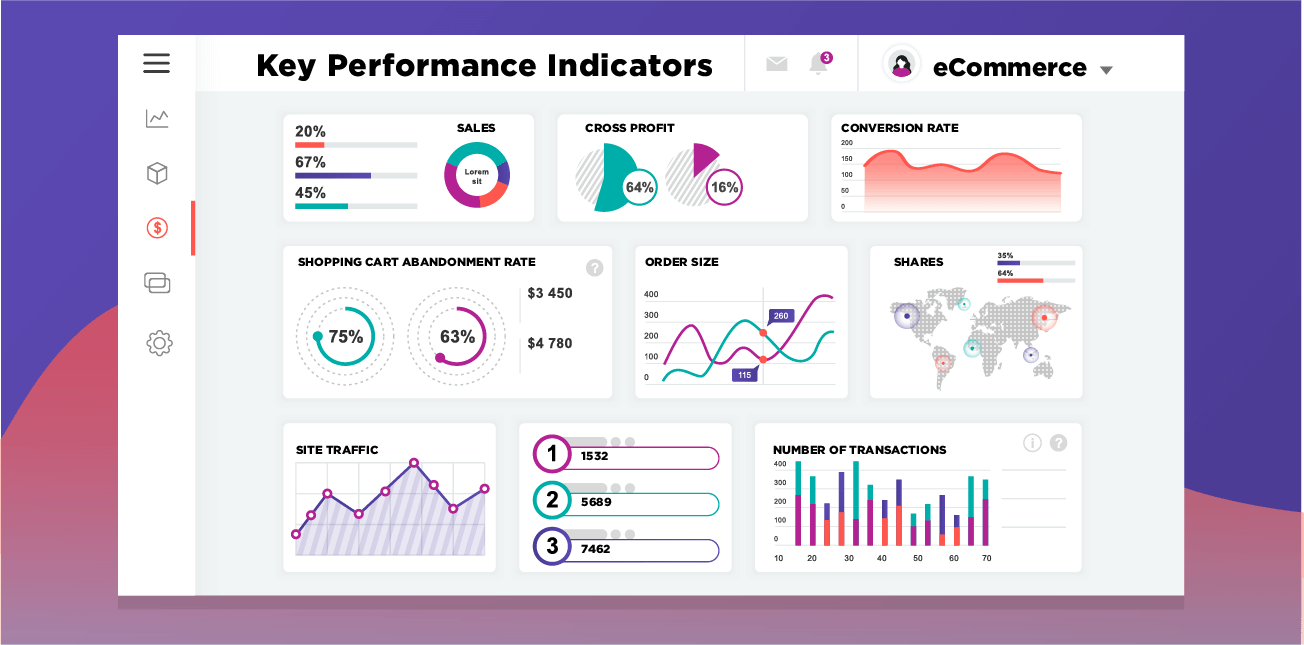

Guide to start an ecommerce marketplace in just 6 steps

Running short of time? Get PDF of the blog in your mail.
|
Play Now

|
It’s a perfect time to start an ecommerce marketplace and grow it rapidly. Predictions from global agencies indicate great e-commerce growth in the future. For example, GroupM suggested that the industry will account for 25% of the retail sales by the year 2024. Online marketplace startups mainly contribute to this growth because of multiple vendors. Starting your own online marketplace platform is easy. It requires no professional coding skills. However, some knowledge of coding is preferable. But, these 6 easy steps guide you to starting an online marketplace.
Table of Contents
- Plan your domain.
- Pick your e-commerce marketplace platform.
- Select your payment gateway.
- Decide your products and their supply.
- Start optimizing and spread the name of your marketplace.
- Start measuring your marketplace performance.
Online store platform providers such as Magento and Shopify fully integrate multivendor marketplace features in your online store. You do not have to invest a great deal of amount in it. Moreover, this integration provides you with better results than you get from your single-vendor online store.
Marketplace solutions and online store software together eased the setup of online marketplace businesses. This mingling inspires every entrepreneur to run online marketplace startups that grow constantly.
Our Holiday Season Sale is running live and it brings a discount of 20% on Magento Marketplace Solutions. So now is the right time to start your ecommerce marketplace at affordable rates!
We’ve studied various marketplaces thoroughly. We found out the challenges and obstacles they came across. What challenges brought them success ultimately? This guide covers all of those experiences, making it easy for you to build a marketplace platform.
Create your own marketplace with our solutions.
How to start an ecommerce marketplace in 6 steps?
If you’re in the same boat, then keep reading. This A-Z guide to an online marketplace startup will walk you through the vital steps. You must follow these steps to build a marketplace successfully.
Step 1- 1. Plan your domain right before starting an ecommerce marketplace
Firstly, acquire the domain name before starting your own online marketplace. This part does not trouble you excessively. A few easy-to-understand stages give you an effective domain name. Such a domain name makes your marketplace ready for sales volume.
Yet, where would it be advisable for you to begin with? What arrangements would be recommended? That is the thing we’ll examine in this part. Peruse on to figure out how you can resolve your internet business tech stack.
Hosting your domain
You may until now have popped up with your marketplace name. Maybe you have your image and space name resolved. If it is so, you can continue to enroll in your area.
Be that as it may. In case no idea or a name struck your mind, or struggle to search your name, read the following tips:
- Pick a name that shows what your online marketplace startup is about.
- Your marketplace name should outline for individuals what you are.
- Multi-vendor marketplaces inform individuals that they’re XYZ retailers.
- The name conveys the primary message of your online marketplace startup.
Get your domain registered
When you’ve picked a domain name, you need to enroll it through a certified space enlistment center. A portion of the main ones include:
- Nexcess
- Cloudways
- AWS
You’ll have to pay for your marketplace name enlistment. The prices will depend upon the name you will pick. Name enlistment centers likewise run advancements every now and then. So, might need to look around to get the most appropriate domain for your marketplace.
Step 2- Pick your e-commerce marketplace platform.
Next up is choosing your e-commerce platform. This is the base of your new online marketplace startup. The software enables your marketplace to provide essential services to you, your vendors, and buyers.
Robust software platforms build a marketplace without any difficulty. It smoothens the functions of your marketplace. Your online marketplace startup performs some of the following functions without any hassle-
- Support multiple transactions
- Lists unlimited products
- Deliver customer service timely
- Manage vendors and their orders
- Marketing tools to promote your marketplace
- Automatic approval of products uploaded by vendors
- Analysis of vendor growth in your marketplace
There are top software options such as Magento, Prestashop, and Opencart for you to choose from to build a marketplace.
But it depends on what kind of platforms you chose from the two categories available. Either you opt for an open-source if you want lots of customization or chose SAAS if you have less money and resources. Yes, e-commerce platforms come in two categories-Open-source and SAAS.
Open-source
An open-source online marketplace platform lets you host, actualize, and upgrade your marketplace. Deep knowledge of coding and web-based business helps you run your new online marketplace startup through open-source software.
Open-source ecommerce marketplace software has a note-worthy feature of adaptability. It adapts well to any customization you make. This adaptability feature gives you more control over the look, feel, and conduct of your marketplace.
But open-source platform comes with the complexity of coding every part of your marketplace. It takes several weeks to start an ecommerce marketplace with open-source code software. You create codes for every aspect. Image processing, server logging and monitoring, emails, and much more. This takes time and money too.
Otherwise, you also have the option to hire experts such as the CedCommerce team. They simplify all of the mentioned complex tasks of starting an ecommerce marketplace on an open-source platform.
SAAS
Software as a cloud( SAAS) marketplace platforms gives you a readymade marketplace. You don’t need to code every aspect of your marketplace on this platform. You just pay a subscription fee. This fee covers all the requirements you need in a marketplace, including the security features.
Your e-commerce marketplace platform is the most vital mechanical segment of your store. Not to sound emotional, however, your online marketplace arrangement can represent the deciding moment in your business. So grab the opportunity to discover, vet, and pick your stage.
Step 3- Select your payment gateway.
For clear reasons, it is worth mentioning payment systems in this online marketplace guide. Thus, payment is an extraordinarily imperative piece of your multi vendor ecommerce business. It is the reason you’ll need to ensure that you know about the payment systems before starting an ecommerce marketplace. Make sure to choose the correct payment door, and that it functions admirably with your marketplace.
For the uninitiated, a payment gateway is a processing portal that approves and setups the card payment maneuver on the web. Basically, payment passages empower you to acknowledge MasterCards on your site.
There are a few payment entryways in the market, and a portion of the vital ones are:
- Stripe
- PayPal
- 2Checkout
- WorldPay
Consider these essential variables when settling on these payment gateways as they are the deciding factor for buyers choosing to pay from one of them on your marketplace platform:
Fees & Expenses
Payment providers bear expenses to provide payment services on your marketplace. They charge certain amounts to meet those expenses. Many of them may have fixed expenses per exchange. While others have variable rates or charges. The correct decision will rely upon your costs and the different options you have.
Setup, chargeback, and other payment fees may apply likewise. Payment providers may charge a monthly fee and other administration costs.
Your area and the area of your clients may likewise be a factor. As some entryways don’t bother another different nation. On the other hand, many entryways charge extra expenses when they see payments from outside the United States.
Payment types
Another enormous thought? The sorts of payment that you need to acknowledge while you build a marketplace. Practically all payment portals bolster card payment, yet in case you’re intending to acknowledge non-customary types of payment, for example, digital forms of money like Bitcoin. At that point, you may need to do some examination to guarantee that the gateway underpins that payment type.
Some payment methods you can integrate-
Another enormous thought? The sorts of payments that you need to acknowledge. Practically all payment portals bolster card payment, yet in case you’re intending to acknowledge non-customary types of payment, for example, digital forms of money like Bitcoin. At that point, you may need to do some examination to guarantee that the gateway underpins that payment type.
- Prepaid card payments
- E-wallets
- Cryptocurrencies
- Bank transfers
- Cash
- Mobile payments
E-commerce marketplace payment integration solutions
Payment integration solutions make your online marketplace a lot less demanding. They coordinate different payment methods to give you a kick to start your own online marketplace. Such solutions save both your time and money. Moreover, buyers do not switch to different sites to complete purchases. Thus, payment integration solutions enhance their checkout experiences.
Some of the payment solutions you can choose when you build a marketplace are-
- Axis Payment Method for Magento 2– This solution connects customers’ bank accounts to Axis Bank
- EBS Payment Method for Magento 2– Connect your marketplace with the EBS payment gateway.
- Vendor PayPal Adaptive addon for Magento 2– Your online marketplace splits payments through this addon
Check out the Magento 2 extensions for payment methods.
Step 4- Decide your products and their supply
Products are the lifeblood of any e-commerce marketplace. Thus you ought to collect vendors for it. You get it right!!. During this section, we’ll discuss a way to decide what merchandise to sell, what vendors will you need, and the way to divert their attention to your marketplace.
Exploring suppliers
While attracting sellers, it is important to explore your vendors. Learn what they expect from your marketplace. Many of them know the facilities that Amazon, Flipkart, or eBay provides. Therefore, they search for the same or better ones on your online marketplace.
This essential research molds your marketplace to meet their expectations.
Give them a reason to believe that your online marketplace startup offers better ROIs than the rest. Reasons could be inculcating a smooth transaction or shipping services in it. Have inventory systems that they easily manage. Giving them payments on time builds their trust as soon as you start your own online marketplace.
Communicate with suppliers
Pay a visit, mount a decision, or push an email to potential vendors and acquire to grasp them higher.
Doing this won’t solely facilitate you congregating lots of data and getting your queries answered, however, will permit you to judge every supplier’s semantics. This is the key, particularly if you’re addressing suppliers overseas.
The conclusion of not exercising this practice would lead you to miscommunicate or find yourself with incorrect merchandise or orders.
Convince your vendors-
Convincing vendors has its own set of challenges. But, ensuring their business’s profit from your marketplace will definitely make them sign up for it.
Therefore, keep forward your marketplace’s capability of generating benefits for them. However, they should also not be regretting signing up later. Convince your vendors of the fact that your online marketplace offers them the best services-
- Your online marketplace gives them the ability to run their business.
- It can register them at a low cost. They do not need to invest much in it.
- The vendor management system enables them to keep track of their sales.
- They can frame strategies for boosting their sales if the marketplace analysis report shows slow growth.
- Your marketplace aids them in selling their dead products.
- You provide them with a strong inventory management system
.
Check out our advanced marketplace solutions
Step 5- Order fulfillment processes
Buyers leave your marketplace if your marketplace does not offer convenient delivery options. They even abandon shopping carts when they feel inconvenient. Instead, they face issues like-
- High delivery costs
- Slow delivery speed
- Cumbersome return policies
- Long checkout processes
All these reasons stem from the fact that buyers do not want to waste their time in your marketplace. Therefore, they expect free and fast shipping from it. It remains the leading driver of repeated sales. 95% of buyers look for fast delivery options while shopping online.
But vendors feel the pain to offer free shipping. Most of them pay a third of their profit on shipping for their businesses. That’s why they levy heavy shipping fees on buyers. In this way, they lose leads. That’s where your online marketplace platform comes to the rescue.
How you can play big in this order fulfillment field? Read here:
Shipping elements you need-
- Shipping carriers & couriers-
Connecting shipping operators to your marketplace. Some of the right operators are UPS, DHL, and FedEx.
- Order management
Order management systems that process orders. It tracks orders with the help of CRM software like Salesforce and Hubspot.
- Fulfillment
The packaging, labeling, and shipping of items after receiving orders.
- Tracking
A tracking system that updates status such as shipped or in transit.
- Returns
A smooth returns process promotes loyal customers.
- Customer service
Form a team to provide customer support.
The cost of fulfilling orders-
Buyers pay on your marketplace for products, delivery, and shipping. They also additionally pay taxes such as VAT. You apply shipping costs to them for different variables. Those variables include dimensions, weight, or carrier.
As far as delivery, you charge buyers for its own variables. Those variables include handling, packaging, and insurance.
Marketplace shipping integrations-
How do you connect your marketplace to a shipping solution? There are third-party platforms like Cedcommerce. Cedcommerce provides shipping APIs to connect shipping companies to your marketplace. It connects companies such as FedEx or UPS. The marketplace integrations prevent errors, integrate multiple carrier options, and validate addresses.
Step 6- Optimize and spread the name of your marketplace.
Along these lines, you set up your payment portal, shipping services, and other facilities. You now finally build a marketplace. But how will people know about it? Let’s find out-
Search Engine Optimization (SEO)
Starting an ecommerce marketplace involves driving folks from all around the internet. When you start an ecommerce marketplace, it’s intrinsic to make yourself be found. All this gameplay revolves around the mastermind “SEO.” The foremost necessary factor for search engine optimization is backlinks. The backlinks you provide to your domain generate a tally of 100 known as your Domain Rank.
The domain rank determines where you are available on the Google search results over specific keywords and the way you retrieve a lot of organic traffic you get to your website. But to induce backlinks and rank extreme on Google, you ought to subscribe to the simple backlink building.
Email marketing
Email Marketing is an extremely effective strategy for emails to prospects and customers. Effective promoting emails convert prospects into customers and switch one-time patrons into customer loyalty, raving buyers making you capable to acquire leads and generate sales, 24/7.
People who purchase merchandise marketed through email pay more compared to people who don’t receive email offers. In fact, email selling has major ROI and that’s huge! And if you’re curious, social media converts even higher.
Think Again: The common price of an email is a minimum of thrice that of social media.
Advertisements
Next up when you have been victorious in achieving tons of program clicks with SEO, search engine advertisements could be a vital medium to drive additional traffic from Google search queries to your website.
The 3 varieties of campaigns you’ll run with Google Ads are Search, Display, and Responsive. You need to check before you start your own online marketplace which of them works and optimize ad campaigns too.
We conjointly advise running internet retargeting ads aboard these varieties of paid traffic funnels.
Social Media
After you build a marketplace, social media platforms should adequately attract the eye of purchasers. Their social media approach could be entirely disparate from the one you could be practicing. Take another examination of the best user profile created earlier on your favorite social media.
It’ll provide you valuable insight into your target market audience and will receive new data. Identify wherever they pay time and what prompts them to create purchases.
It’ll facilitate you in pinpointing the social media channels that are vital to the present target market. Knowing this data will facilitate your device an additional, economic social media promoting strategy utilizing these passages.
Resolve your marketplace challenges with our solutions.
Start measuring your marketplace performance
Your store is good to go up, and your showcasing endeavors are driving traffic and deals. It’s an ideal opportunity to analyze your marketplace performance status to quantify results and execution.
How you complete this progression may differ contingent upon ways to start your own online marketplace, yet normally, you ought to most likely get the measures you need by taking a gander at your stage’s reports and by utilizing Google Analytics.
Here is a portion of the best measurements you should take:
Your website traffic
What number of guests would you say you are getting every day, week, or month? How do clients discover your marketplace? Where are they found?
Taking a look at your site traffic will enable you to respond to the above inquiries with the goal that you can settle on more intelligent business choices while starting an ecommerce marketplace.
For instance, realizing how individuals are finding your marketplace could reveal to you which directs merit putting resources into. Suppose the greater part of your guests is discovering you on Instagram.
That understanding discloses to you that it may merit multiplying down on that interpersonal organization. Or on the other hand, knowing where your clients are found could enable you to actualize progressively restricted crusades or site highlights.
You could, for example, begin showing costs in specific money on the off-chance that you realize that a large portion of your guests is from a particular nation.
Conversion Rate
Your change rate lets you know whether individuals are purchasing your stock as you start your own online marketplace startup.
A low transformation rate could show various issues. It could mean you’re drawing in the wrong group of onlookers. Maybe there’s a distinction between your promotion and your item contributions. Site ease of use could likewise be an issue. Perhaps your site is excessively moderate, or it isn’t easy to understand.
Whatever the case, in the event that you have a low transformation rate, dive into the issue and attempt to pinpoint the reason with the goal that you can address it. Starting an ecommerce marketplace by following this online marketplace guide is undoubtedly going to possess the best-in-class features.
Start an ecommerce marketplace with CedCommerce
For a remarkable amount of time, CedCommerce has been offering the necessary technical solutions specifically made to build a marketplace. These extensions come with a multitude of features to aid in the development of a rich multi-vendor e-commerce marketplace.
CedCommerce’s Magento 2 Marketplace extensions and add-ons are ready-made and reasonably priced solutions for building a website like Amazon. A marketplace armed with these features is undoubtedly going to possess the best-in-class features.
To start your own online marketplace platform or a Mobile App for business, and to see what our satisfied customers have to say about us, visit our website.
Some of the marketplaces created by Cedcommerce




